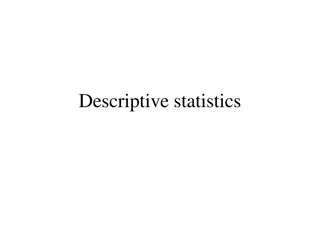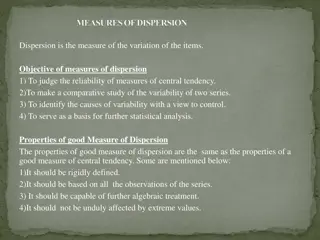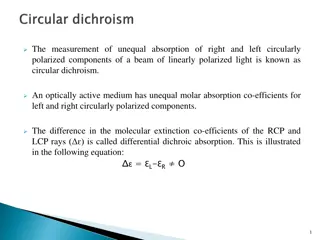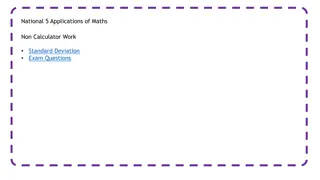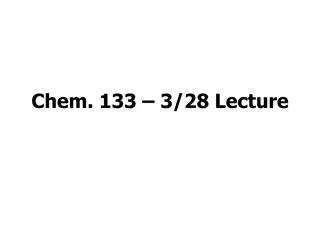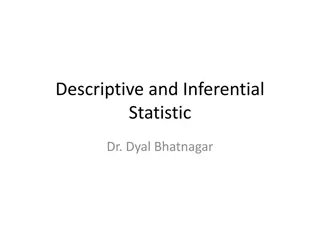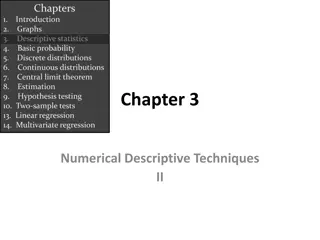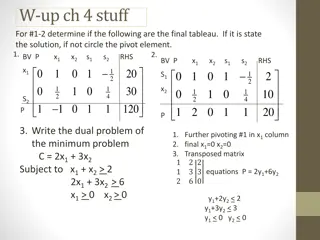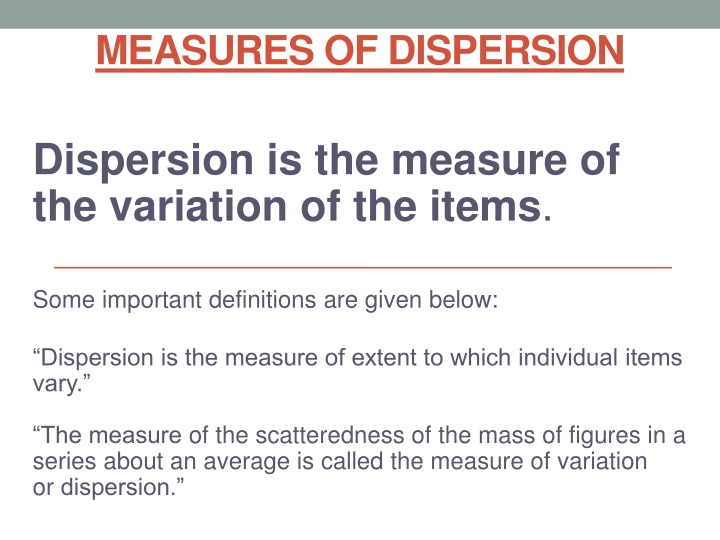
Measures of Dispersion in Statistics
"Learn about the importance of dispersion in statistics and explore different measures such as range, interquartile range, mean deviation, and standard deviation. Discover how to calculate mean deviation from mean with practical examples."
Download Presentation

Please find below an Image/Link to download the presentation.
The content on the website is provided AS IS for your information and personal use only. It may not be sold, licensed, or shared on other websites without obtaining consent from the author. If you encounter any issues during the download, it is possible that the publisher has removed the file from their server.
You are allowed to download the files provided on this website for personal or commercial use, subject to the condition that they are used lawfully. All files are the property of their respective owners.
The content on the website is provided AS IS for your information and personal use only. It may not be sold, licensed, or shared on other websites without obtaining consent from the author.
E N D
Presentation Transcript
MEASURES OF DISPERSION Dispersion is the measure of the variation of the items. Some important definitions are given below: Dispersion is the measure of extent to which individual items vary. The measure of the scatteredness of the mass of figures in a series about an average is called the measure of variation or dispersion.
Two types of measures of dispersion (i) Absolute measures of dispersion (ii) Relative measures of dispersion
Important Measures of Dispersion Following are some important measures of dispersion 1. Range 2. Interquartile Range and Quartile Deviation 3. Mean Deviation or Average Deviation 4. Standard Deviation
Range Range is the simplest measure of dispersion. Range (R) = Largest observation Smallest observation L = Largest observation S = Smallest observation R = Range Coefficient of Range =
Q Q 3 1 + Q Q 3 1 Quartile Quartiles are those values of the variable, which divides the total frequency into four equal parts. Coefficient of Quartile: Coefficient of Quartile =
In case of Individual and discrete Series Q1 = Size of item of the series Q3= Size of item of the series.
Average Deviation or Mean Deviation It is the arithmetic average of the group measured from the average (Mean or Median or Mode taking all deviations as positive). 1 Mean Deviation = M f x i i N
The Mean Deviation about mean or median or mode can be expressed as follows (i) Mean Deviation from Mean ( ) 1 = N x D . . x M i x (ii) Mean Deviation from Median ( ) 1 = N x M D . . M i d M d (iii) Mean Deviation from Mode ( ) 1 = N x M D . . M i o M o
Q. Find mean deviation about mean from the following data: 3, 5, 6, 7, 8, 10, 11, 14 Solution: Arithmetic Mean 8 = x ix xi xi x x 3 -5 5 5 -3 3 ( x ) Mean Deviation From Mean 6 -2 2 7 -1 1 1 = N x D . . x M i x 8 0 0 10 2 2 22= = . 2 75 11 3 3 8 14 6 6 = 22 xi x
Standard Deviation(Root mean square deviation) The root-mean square deviation, denoted by s, is defined as the positive square root of the mean of the squares of the deviations from an origin A. 1 N = 2) ( s x A A = Assumed Mean i In case of frequency distribution 1 N = 2) ( s f x A i i
Q. Calculate standard deviation(S.D.) from the following data: 10, 11, 17, 25, 7, 13, 21, 10, 12, 14 1 N Solution. Formula Size = 2) ( x x ( )2 xi x xi x i 10 -4 16 17 3 9 = 14 x 25 11 121 1 N 7 -7 49 S.D. = 2) ( x x i 13 -1 1 21 7 49 274= = 27 40 . 10 -4 16 10 12 -2 4 = . 5 23 14 0 0 11 -3 9 ( ) N=10 2= 274 x ix
Q. Find standard deviation (S. D.) from the following data: Size Frequency 4 5 12 6 15 7 28 8 20 9 14 10 5 6 Solution: Assumed Mean A = 7 Size Frequency id = 2 2 i d x A f id f id i i i 2 2 i f d f d 4 6 -3 -18 9 54 i i i = N N 5 12 -2 -24 4 48 6 15 -1 -15 1 15 2 238 6 7 28 0 0 0 0 = 100 100 8 20 1 20 1 20 9 14 2 28 4 56 = . 2 38 . 0 0036 10 5 3 15 9 45 = N = 100 = 2= i . 1 54 6 238 f id f id i

